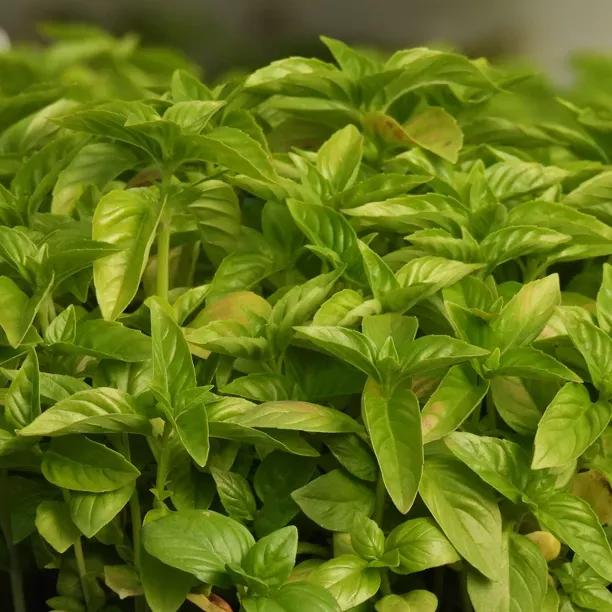British Basil Plants
The details
Ocimum basilicum
Pot Grown Herbs- Best Basil for Growing in Colder Sites
- Uses: Italian and Mediterranean dishes
- Taste: Traditional sweet basil flavour
- Harvest: May-October
- Storage: Use fresh, can be frozen or dried
- Height: 30cm
- Spacing: 30cm
- Life: Annual
Recommended extras
Description
British Basil Plants
British Basil was bred in the UK for outdoor growing, specially selected to cope with our cooler conditions and wind, so the plants are more robust than traditional sweet basil.
It has attractive, bright, green leaves that don’t discolour, and they come pretty close to that traditional basil flavour, so reminiscent of trips to exotic locations like the Italian pizza restaurant across town. Still, there is undeniably a trade-off between taste and durability, so for the best flavour take a look at our Genovese Basil.
Browse the rest of our extensive range of herbs and vegetables.
All you need to do with Basil is tear the leaves (it's better than cutting them, as you get a much bigger release of essential oils this way) to release the aromatic smell. Always add at the end of cooking, because the essential oils that provide the smell and taste would break down in the heat.
Great In Your Herb Garden...
Pots are ideal for growing British Basil in, or they can go into a sunny herb bed or at the front of the vegetable plot. Plants are easy to grow but prefer a well-drained sandy soil - never overwater. Water carefully at root level and avoid splashing the leaves, and you'll have pickings well into autumn. Bring potted plants indoors on a sunny windowsill to prolong the season.
Harvest basil leaves little and often when required to promote new growth. Pinch out flowers as soon as they appear to prolong the harvest period - they also lower the amount of essential oils in the leaves.
Basil is the main ingredient in pesto sauce and is the ideal partner for tomato dishes. Think of the Italian flag, and you get the classic tomato, mozzarella and basil salad. Tear leaves to pop onto a Margherita pizza fresh from the oven for a simple yet classic delight.
Basil is also a great companion plant for tomatoes, chillies and aubergines to protect them from aphids. Basil and tomatoes grown together are supposed to make each other taste better.
Features
- Uses: Italian and Mediterranean dishes, especially pesto and pizza.
- Taste: Intense basil flavour, but less sweet and traditional than Genovese Basil
- Harvest: May-October.
- Storage: Use fresh, can be frozen or dried.
- Height: 30cm.
- Spacing: 30cm.
- Life: Annual.
Did You Know...
Basil has anti-inflammatory properties and is a good source of vitamin A, beta-carotene, vitamin K, magnesium, calcium, iron, potassium and vitamin C. Ocimum is Latin for basil, while basilicum is derived from the word for king or royal, as it was a popular herb for making perfumes. A basiliscus is a basilisk, the reptile that can kill with its gaze or venomous saliva, and there is evidence to suggest that basil can be used as an antidote to the latter.
Aftercare
Basil needs a sunny, sheltered spot, with slightly dry conditions - do not overwater. Aim for good air circulation and avoid wetting foliage when watering. Feed once a month if in pots. Will not tolerate cold. Bring pots indoors to prolong the season in late summer. Can be prone to aphids. Harvest topmost leaves first to encourage branching taking a few leaves from several plants.


